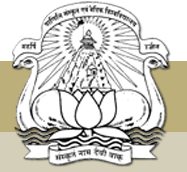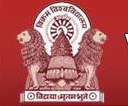About Ujjain ( latitude: 23.1823900, longitude: 75.7764300 )
Ujjain /uːˈdʒeɪn/ listen also known as Ujain, Ujjayini, Avanti, Avantika, Avantikapuri is an ancient city situated on the eastern bank of the Kshipra River (Hindi: क्षिप्रा) in the Malwa region of central India. The city is today part of the state of Madhya Pradesh, and it is the administrative centre of Ujjain District and Ujjain Division.
In ancient times, the city was called Ujjayini. As mentioned in the Mahabharata epic and Buddhist literature, Ujjayini was the capital of the Avanti Kingdom. Traditionally exalted as one of the seven sacred cities (Sapta Puri) of the Hindus, Ujjain is one of the four sites that host the Kumbh Mela (also called the Simhastha Mela), a quadrennial mass pilgrimage that attracts millions of Hindu pilgrims from around the country. It is also home to the Mahakaleshwar Jyotirlinga, one of the twelve Jyotirlinga shrines to the god Shiva. An ancient seat of learning, Ujjain is the place where Lord Krishna, along with Balarama and Sudama, received his education from Maharshi Sandipani. It is also known as the city of Temples.
In Indian mythology, the origin of the city is ascribed to the act of Sagar Manthan, which refers to the churning of the primordial ocean performed by the demigods and demons to discover a pot containing the nectar of immortality. The story goes that after the nectar was discovered, a fierce struggle ensued between the demigods and the demons to obtain the nectar for the attainment of immortality. During the chase, a drop of nectar spilled and fell on Ujjain, thus making the city sacred. According to legend, the river Kshipra that flows across Ujjain is regarded to have originated owing to the churning of the gods and goddesses.
Apart from the rich tapestry of myths and legends surrounding the city, Ujjain has stood witness to a long and distinguished history: it was home to legendary rulers including the renowned king Chandragupta II, great scholars such as Brahmagupta and Bhaskaracharya, and literary gems like Kalidasa. Since the 4th century BC, the city was considered the prime meridian by Hindu astrologers, and it was placed as the centre of the world in numerous ancient world maps. In the past, Ujjain was variously known as Arin, Aryn or Ozein to the outside world.
Uddzhajn,Udzajin,Udzdzain,Udždžain,Ujjain,ajyn,awjayn,awjayyn,ujain,ujaina,ujaini,ujjain,ujjaina,ujjayini,ujjeyan,wu du yan na,Удджайн,Уџајин,اجین,اوجائین,اوجاين,उज्जयिनी,उज्जैन,উজ্জয়িনী,উজ্জৈন,ਉੱਜੈਨ,ઉજ્જૈન,ଉଜ୍ଜୈନ,உஜ்ஜைன்,ಉಜ್ಜೆಯನ್,ഉജ്ജയിൻ,უჯაინი,鄔闍衍那,우자인





